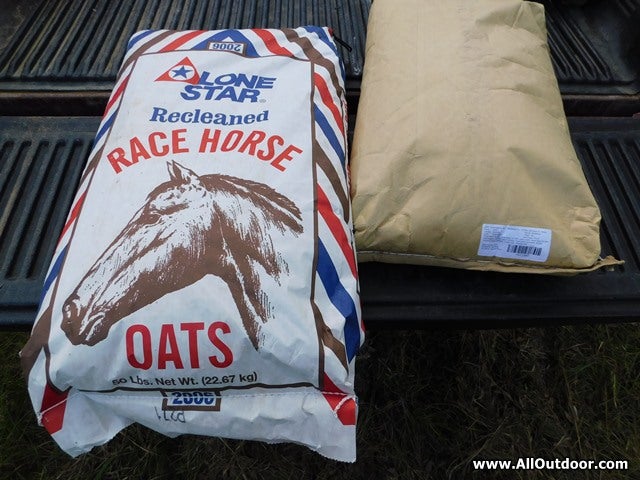Planting a Fall Wildlife Food Plot
Kevin Felts 10.23.17

One trick hunters use to attract wildlife is to plant a fall food plot. On hunting leases or other private land, hunters compete against each other to offer deer the most attractive food. Some hunters go all out. They bring a tiller or tractor to the lease, till up the ground, fertilize, and then plant the seeds.
What kind of seeds are planted?
Any type of plant that can withstand cold temperatures. However, the word “cold” is subjective. Here in southeast Texas, 20 degrees is cold. In other regions, 20 degrees is a walk in the park.
Usually, something along these lines will be planted:
- Rye grass
- Oats
- Turnip greens
- Rutabagas
- Clover
- Winter barley
- Winter wheat
Of course, some people will say one works better than others, or they have never seen deer eat this or that. I have seen whitetail deer walk through a patch of oats and rye grass and never look down. But, that does not mean they do not eat it when I am not in the stand watching.
I worked with a guy who swore by turnip greens. He would tell these tales of how deer would dig up the ground to get every turnip. To hear his stories, you might think the deer were half-dog.
Planting a Food Plot
Use something to break open the ground, such as a tiller or a disk harrow on a tractor. This allows the seed to get below the surface of the soil. Without soil-to-seed contact, the seeds won’t germinate and grow, so it’s a good idea to rake or “drag” the plot after spreading the seeds. Covering them with dirt also helps prevent birds from eating them before they sprout and helps prevent rain from washing them away.
Some people spread fertilizer, but that can get expensive.
Try to spread the seed before a good rain. Not a flooding rain, but a good drizzle or short downpour.
I usually buy 50 pounds of oats and 50 pounds of rye grass. About half of each bag is spread at one time, and the rest spread a couple of weeks later. Sometimes, I take some seeds out of my seed stockpile and throw them out in the food plot.
When I plant a spring garden and a batch of seeds I used has a low germination rate, those seeds will be added to my food plot in the fall. This disposes of the seeds without the good ones going to waste.
A few weeks after a good rain, the seeds will be coming up, and the local wildlife will have a good winter food plot.